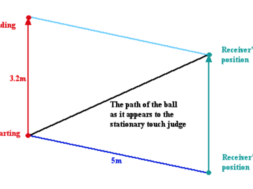
Changes in Road Tax for Electric v Petrol Cars and Infrastructure Development
Changes in Road Tax for Electric v Petrol Cars arise as the United Kingdom is actively promoting the adoption of electric vehicles (EVs) through a combination of taxation policies and incentives, these changes to road tax structures for both EVs and petrol cars might have been missed in the recent budget with advance payments now necessary. Additionally, significant efforts are underway to develop the necessary infrastructure to support the growing number of EVs on the road.
Taxation and Incentives for Electric Vehicle Buyers
As of April 2025, the UK government has introduced changes to the Vehicle Excise Duty (VED) for electric vehicles. Newly registered EVs are now subject to a first-year VED of £10, followed by an annual standard rate of £195 from the second year onwards. This aligns EV taxation more closely with that of petrol and diesel vehicles. gov.uk
To further encourage EV adoption, the government is considering subsidising electric vehicle purchases by guaranteeing consumer loans. This initiative aims to make EVs more affordable by offering low-interest or interest-free loans, thereby reducing the higher upfront costs associated with electric vehicles.
Changes in Road Tax for Electric and Petrol Cars
Starting from April 2025, electric vehicles (EVs) will no longer be exempt from Vehicle Excise Duty (VED), bringing them in line with petrol and diesel cars. Owners of EVs registered between April 2017 and March 2025 will now be required to pay the standard annual VED rate of £195. For EVs registered after April 2025 i.e. new cars, there will be an initial first-year rate of £10, followed by the standard £195 annual charge in subsequent years. What might not be immediately apparent is EVs with a list price exceeding £40,000 will now incur an extra Expensive Car Supplement of £410 per year for five years.
For petrol and diesel vehicles, taxation remains based on CO₂ emissions, with higher-emission vehicles subject to significantly increased rates. From 2025, any new petrol or diesel car purchase will also attract an Advance Emissions Charge designed to discourage the sale of high-emission vehicles. This one-time fee will be determined based on the vehicle’s CO₂ emissions category.
Examples of New Advance Charges for Petrol Cars in 2025
- Small Petrol Hatchback (e.g. Ford Fiesta 1.0 EcoBoost)
- CO₂ emissions: 119 g/km
- Advance Emissions Charge: £750
- Large Petrol SUV (e.g. Range Rover Sport 3.0L Petrol)
- CO₂ emissions: 260 g/km
- Advance Emissions Charge: £2,500
These charges are in addition to the existing first-year VED, which can range from £120 to over £2,605 depending on the emissions level. The aim of this revised tax structure is to gradually phase out high-emission vehicles while making EV ownership more comparable in cost to traditional petrol and diesel cars. Basically the intention is to tax fossil fuel cars out of existance.
Ban on Petrol and Diesel Cars
The UK government has set a target to ban the sale of new petrol and diesel cars by 2035. This policy is part of the broader strategy to reduce greenhouse gas emissions and promote sustainable transportation.
Infrastructure Development for Electric Vehicles
To support the increasing number of electric vehicles, the UK is investing heavily in charging infrastructure. Initiatives such as the Local Electric Vehicle Infrastructure (LEVI) fund aim to accelerate the deployment of public charging points, particularly in areas lacking sufficient coverage. As of the end of 2024, there are more than 7,000 ultra-rapid charge points, with expectations to exceed 10,000 during 2025. The obvious question being is that enough?
However, challenges remain, especially for the 9.3 million households without private parking, who rely on public chargers that can be more expensive and less convenient. Efforts are ongoing to address these disparities and ensure equitable access to charging facilities across the country.
In summary, the UK is implementing a comprehensive approach to encourage the adoption of electric vehicles through revised taxation policies, financial incentives, and substantial investments in charging infrastructure. While significant progress has been made, continued efforts are necessary to overcome existing challenges and achieve the nation’s environmental objectives.












